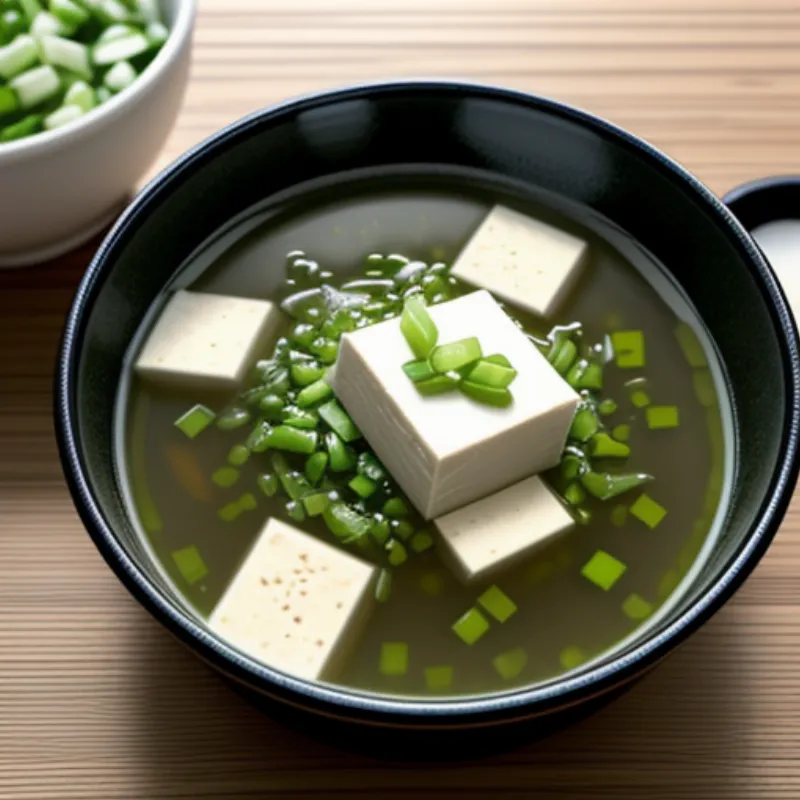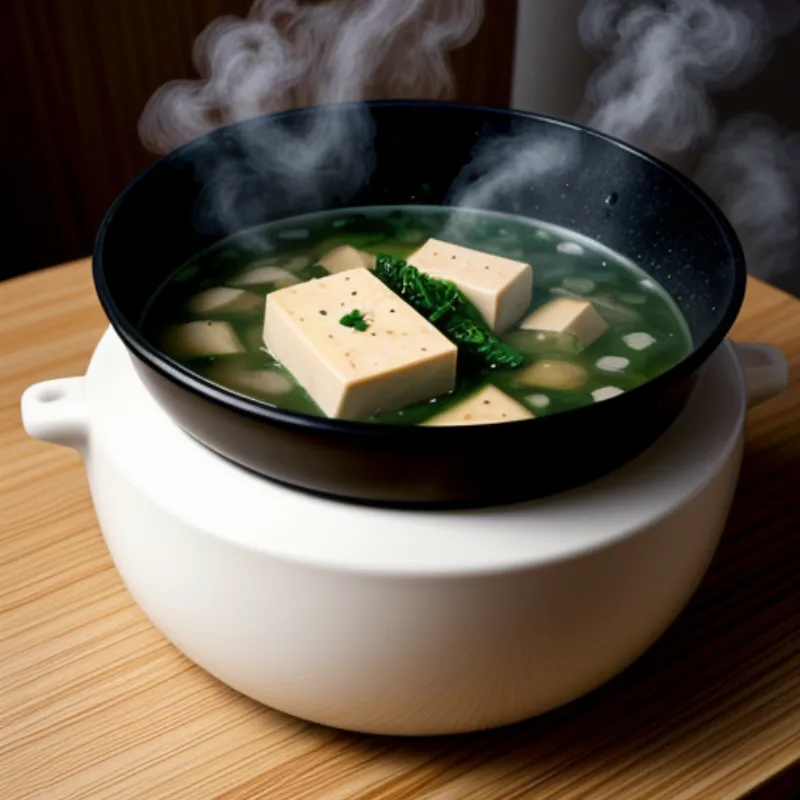Miso soup. It’s one of those dishes that seems incredibly simple yet holds a depth of flavor that’s hard to resist. A staple in Japanese cuisine, this comforting soup is not just delicious but also incredibly versatile. Whether you’re a seasoned chef or just starting your culinary journey, this guide will teach you How To Make Miso Soup from scratch, mastering the art of this beloved classic.
Imagine the aroma of the dashi broth filling your kitchen, infused with the umami richness of miso paste. Each spoonful is a comforting hug, brimming with soft tofu, delicate seaweed, and the fresh bite of spring onions. It’s a flavor profile that is both comforting and refreshing, perfect for any occasion.
Unlocking the Secrets of Delicious Miso Soup
Making miso soup might seem intimidating, but trust me, it’s incredibly easy. With a handful of simple ingredients and a few easy steps, you’ll be sipping on a steaming bowl of homemade goodness in no time.
Ingredients:
- Dashi Broth: 4 cups (For a vegan option, you can substitute with vegetable broth, but traditional dashi offers a unique depth of flavor).
- Miso Paste: 4 tablespoons (Experiment with different types like white, yellow, or red miso for varying levels of saltiness and umami)
- Soft Tofu: 1/2 block (about 150g), cut into small cubes
- Dried Wakame Seaweed: 2 tablespoons (Remember, a little goes a long way! Wakame expands significantly when soaked in water).
- Spring Onions: 2, thinly sliced (For garnish and a touch of freshness)
 Miso Soup Ingredients
Miso Soup Ingredients
Equipment:
- Medium-sized pot
- Whisk
- Small bowl
Instructions:
- Prepare the Dashi: In a medium-sized pot, bring your dashi broth to a simmer over medium heat.
- Awaken the Wakame: While the broth heats, submerge the dried wakame seaweed in a small bowl of cold water. Let it sit for about 5 minutes to rehydrate and soften.
- Whisk in the Miso: Once the dashi is simmering, turn the heat to low. Take a separate small bowl and add a ladleful of the hot broth. Now, whisk in the miso paste until it dissolves completely. This two-step process prevents the miso from clumping and ensures a smooth, flavorful soup.
- Add Tofu and Seaweed: Gently add the cubed tofu and the rehydrated wakame seaweed (gently squeeze out excess water before adding) to the pot. Simmer for about 3 minutes. Don’t let the soup boil at this stage, as it can make the tofu tough.
- Serve and Garnish: Ladle the hot miso soup into bowls. Garnish with the sliced spring onions and enjoy immediately!
Tips and Tricks for the Perfect Bowl:
- Miso Mastery: Remember to taste your soup before adding all the miso paste. Different types of miso have different levels of saltiness, so it’s better to adjust as you go.
- Don’t Overcook: Miso is a living ingredient, and overcooking can diminish its flavor and nutritional value. Add it towards the end of cooking and only simmer gently.
- Creative Additions: Feel free to get creative with your miso soup! Add vegetables like mushrooms, spinach, or bok choy. For a heartier meal, add cooked noodles or rice.
 Cooking Miso Soup
Cooking Miso Soup
Beyond the Bowl: The Versatility of Miso Soup
What’s wonderful about miso soup is its adaptability. It can be a light and refreshing starter or a comforting meal in itself. You can pair it with rice dishes like sushi or enjoy it as a light lunch.
“Miso soup is like a blank canvas,” says Chef Hana, a renowned Japanese culinary expert. “The basic recipe is a wonderful foundation for endless variations. Get creative with seasonal vegetables, different protein sources, or even a touch of spice.”
FAQ: Your Miso Soup Queries Answered
- Can I make miso soup ahead of time? While it’s best enjoyed fresh, you can prepare the components ahead. Store the dashi broth, tofu, and seaweed separately and assemble the soup just before serving.
- What can I substitute for dashi? Vegetable broth can be used as a substitute for a vegan option. However, for the most authentic flavor, using traditional dashi is recommended.
- How long does miso soup last in the fridge? It’s best consumed within 2 days.
Making miso soup is a journey into the heart of Japanese cuisine. It’s about appreciating the simplicity of ingredients and the art of creating a harmonious balance of flavors. So go ahead, try this recipe, and experience the magic of this comforting classic. Don’t forget to share your experience and explore more delicious recipes on Family Cuisine!
